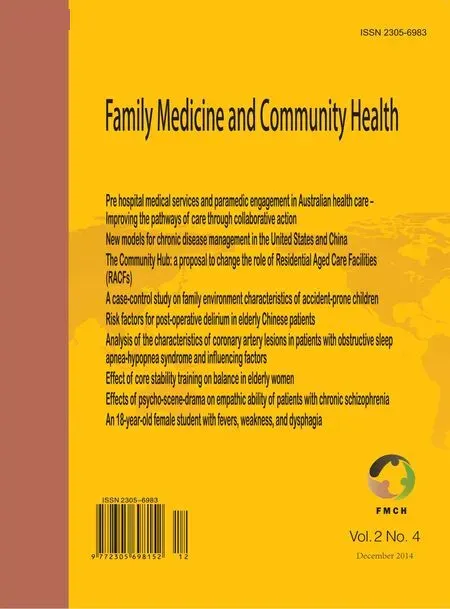An 18-year-old female student with fevers, weakness, and dysphagia
John Murtagh
An 18-year-old female student with fevers, weakness, and dysphagia
John Murtagh
Case history
An 18-year-old female sought evaluation of lethargy and weakness of 3 days duration. She also complained of fevers with sweating, headaches, nasal blockage, anorexia with two episodes of emesis, and a very sore throat with dysphagia. She had felt ill for the preceding 2 weeks. There has been no contact with persons with infectious diseases.
Medical history: Idiopathic scoliosis; otherwise good health.
Surgical history: Appendectomy for appendicitis.
Drug history: Occasional marijuana and alcohol use.
Social history: Lives with parents and an older brother; studies art at the University.
Physical examination
General appearance: Young woman who appears pale and ill; periorbital edema and nasal quality to voice.
Pulse, 90/min and regular; BP, 110/70 mmHg; temperature, 38.9°C; respiratory rate, 14/min. Throat: Tonsillar enlargement bilaterally; white-yellow exudate on tonsils bilaterally; petechiae on palate.
Lymphadenopathy, especially involving the posterior cervical group.
Fine pink maculopapular rash on anterior trunk.
Questions to consider
1. What is the most likely diagnosis and differential diagnosis?
2. What serious diseases must not be missed?
3. What are the appropriate key investigations?
Diagnosis
The most likely diagnosis is Epstein-Barr mononucleosis (EBV), also known as glandular fever and infectious mononucleosis.
The main differential diagnosis includes bacterial tonsillitis, especially group A betahemolytic streptococcus, and viral tonsillitis (other than EBV).
Other conditions (uncommon-torare) to consider and not to be missed
? human immunodef ciency virus (seroconversion stage)
? cytomegalovirus
? toxoplasmosis
? diphtheria
Note: A f ne, non-specif c maculopapular rash occurs as a primary rash in at least 5%–10% of cases of EBV infection.
Key investigations
? Full blood f lm, including differential white cell count
? Blood tests for EBV
e.g., Paul Bunnell or monospot test EBV-specif c viral capsule antigen antibodies(IgM and IgG)
? Throat swab –if bacteria suspected
Discussion
The patient tested positive for EBV, as expected. Enlargement of the liver and spleen occurs, but sometimes it is diff cult to palpate the enlarged organs clinically on physical examination.
Further questions
1. What is the clinical def nition of a fever?
2. What are the possible pitfalls in the management of a patient with tonsillitis?
3. What is the treatment for uncomplicated glandular fever in this patient?
Answers
1. A fever is def ned as an early morning temperature> 37.2°C or a temperature <37.8°C at other times of the day.
Normal body temperature (measured orally) is 36–37.3°C (average 36.8°C).
There is considerable diurnal variation in temperature, thus the temperature is usually higher in the evening by approximately 0.6°C
Normal average values (morning) are as follows: Oral36.8°C Axillary36.4°C Rectal37.3°C Otic37.3°C
2. One pitfall is to treat the EBV tonsillitis as bacterial tonsillitis (assuming strep throat) and prescribing penicillin or ampicillin/amoxicillin.
This is associated with no response to treatment and the possible development of a hypersensitivity rash (90% association with ampicillin; 50% with penicillin).
3. The treatment is conservative and supportive (no specif c drugs/anti-microbials).
Rest (the best treatment) during the acute stage, preferably at home and indoors.
Ample f uids ensure adequate hydration.
Aspirin (>14 years) or paracetamol to relieve discomfort.
Gargle soluble aspirin or 30% glucose to soothe the sore throat.
Advise against alcohol, fatty foods, and continued activity, especially contact sports.
Conf ict of interest
The author declares no conf ict of interest.
John Murtagh
Emeritus Professor, Department of General Practice, Monash University, Victoria 3165, Australia
E-mail: john.murtagh@monash. edu
23 September 2014;
Accepted 10 November 2014
 Family Medicine and Community Health2014年4期
Family Medicine and Community Health2014年4期
- Family Medicine and Community Health的其它文章
- Effects of psycho-scene-drama on empathic ability of patients with chronic schizophrenia
- Effect of core stability training on balance in elderly women
- Analysis of the characteristics of coronary artery lesions in patients with obstructive sleep apnea-hypopnea syndrome and inf uencing factors
- Risk factors for post-operative delirium in elderly Chinese patients
- A case-control study on family environment characteristics of accident-prone children
- The Community Hub: a proposal to change the role of Residential Aged Care Facilities (RACFs)
